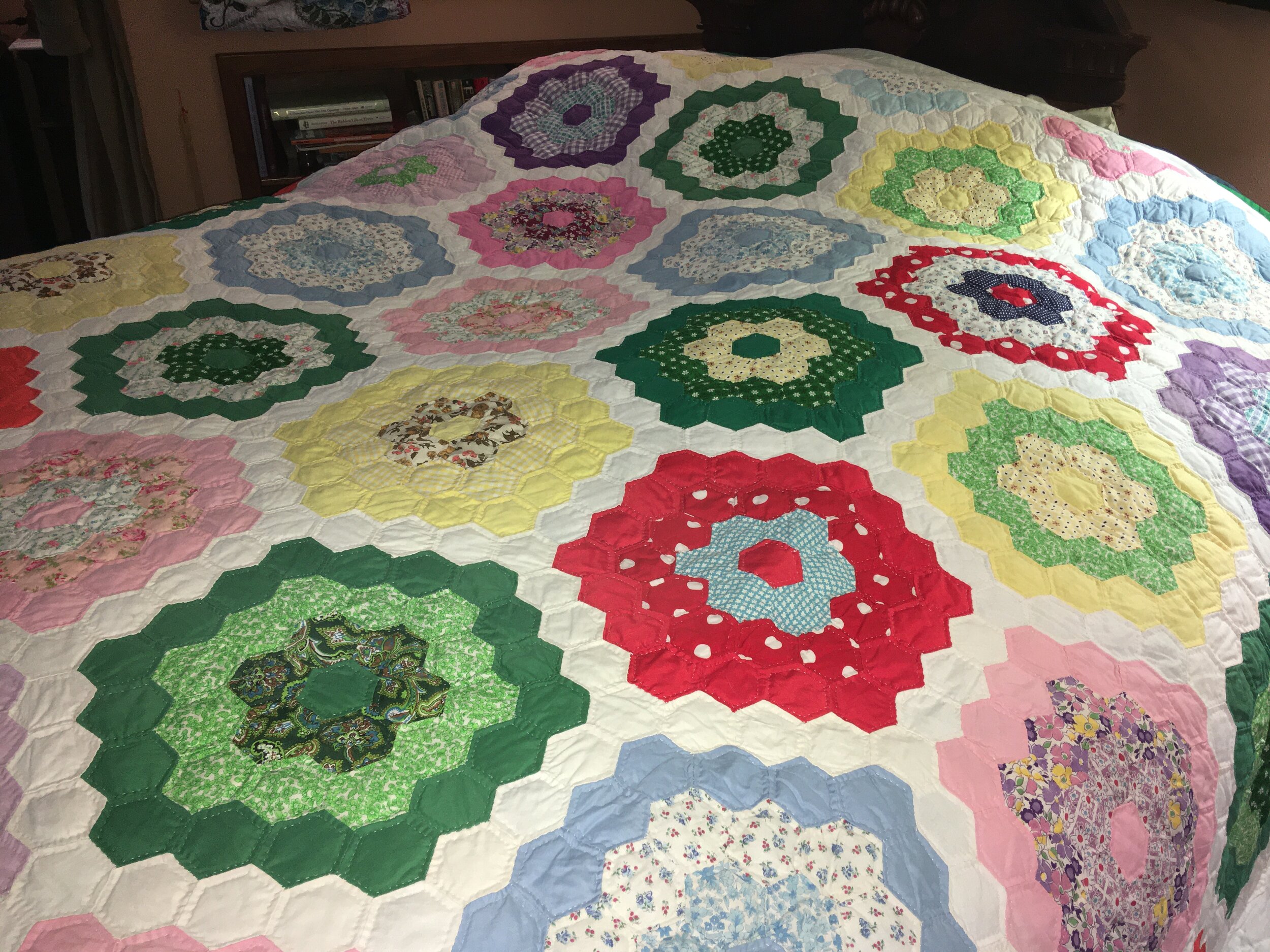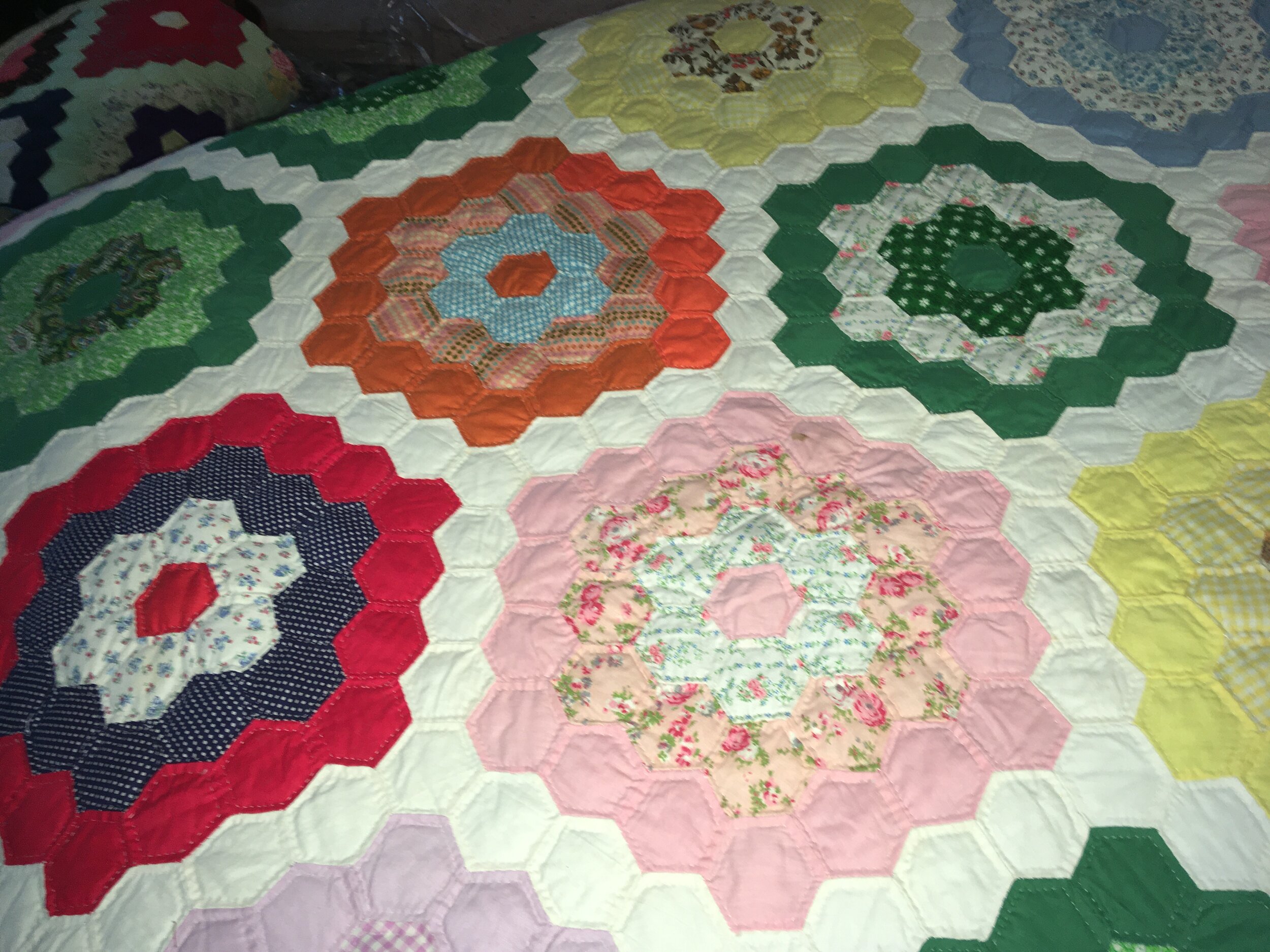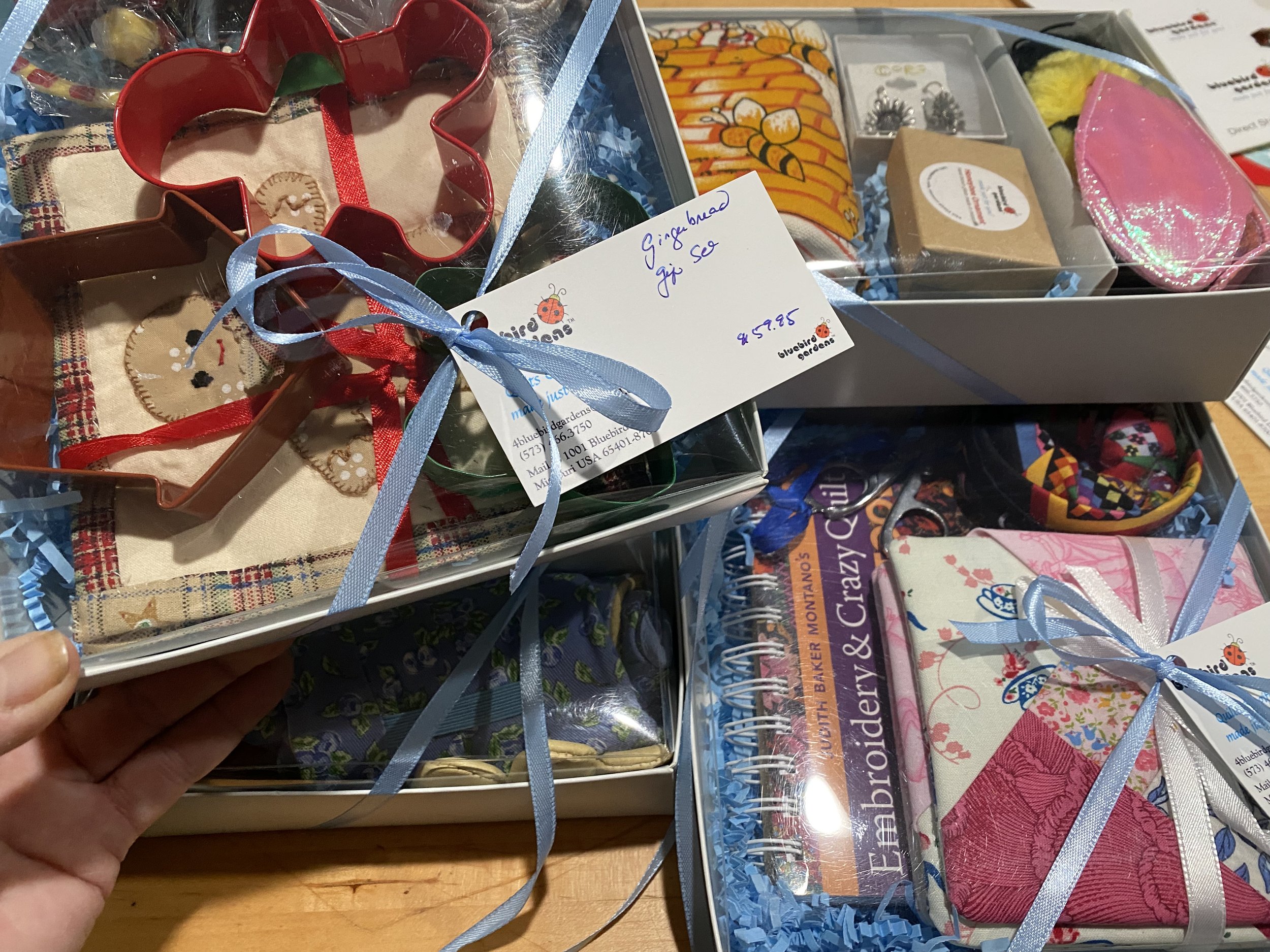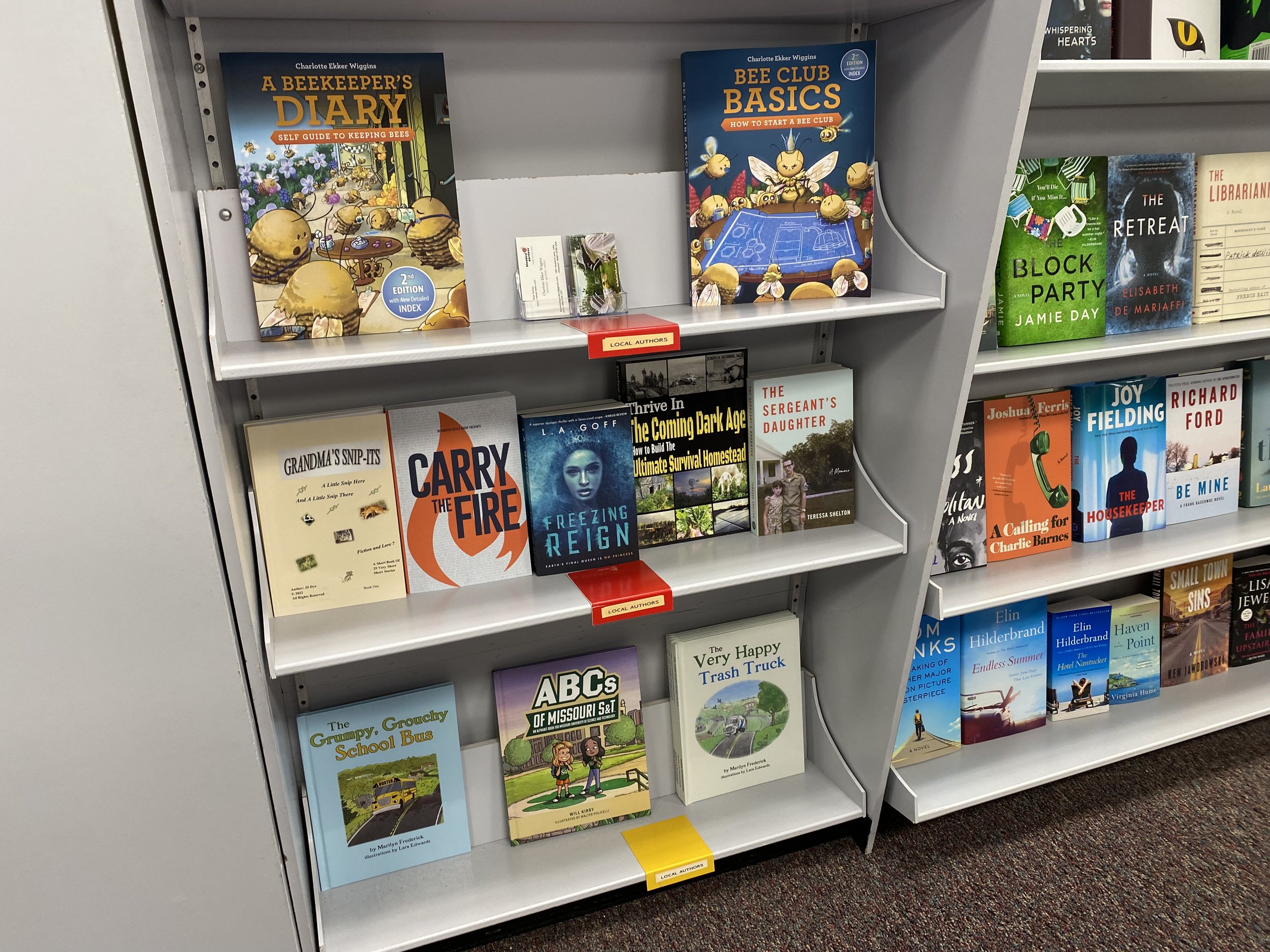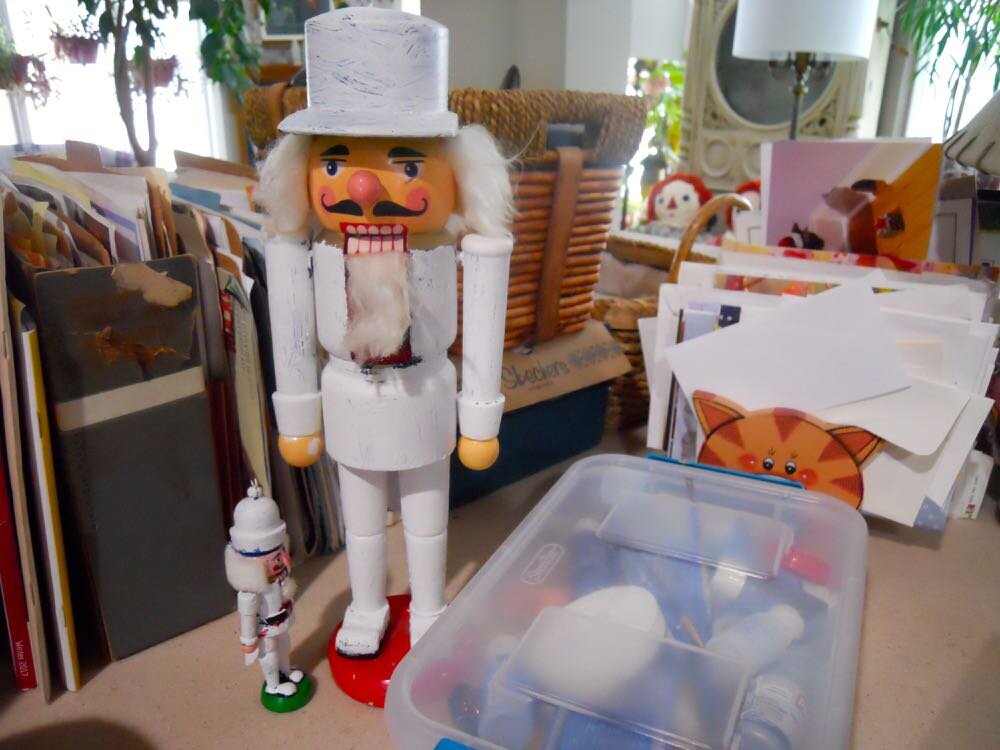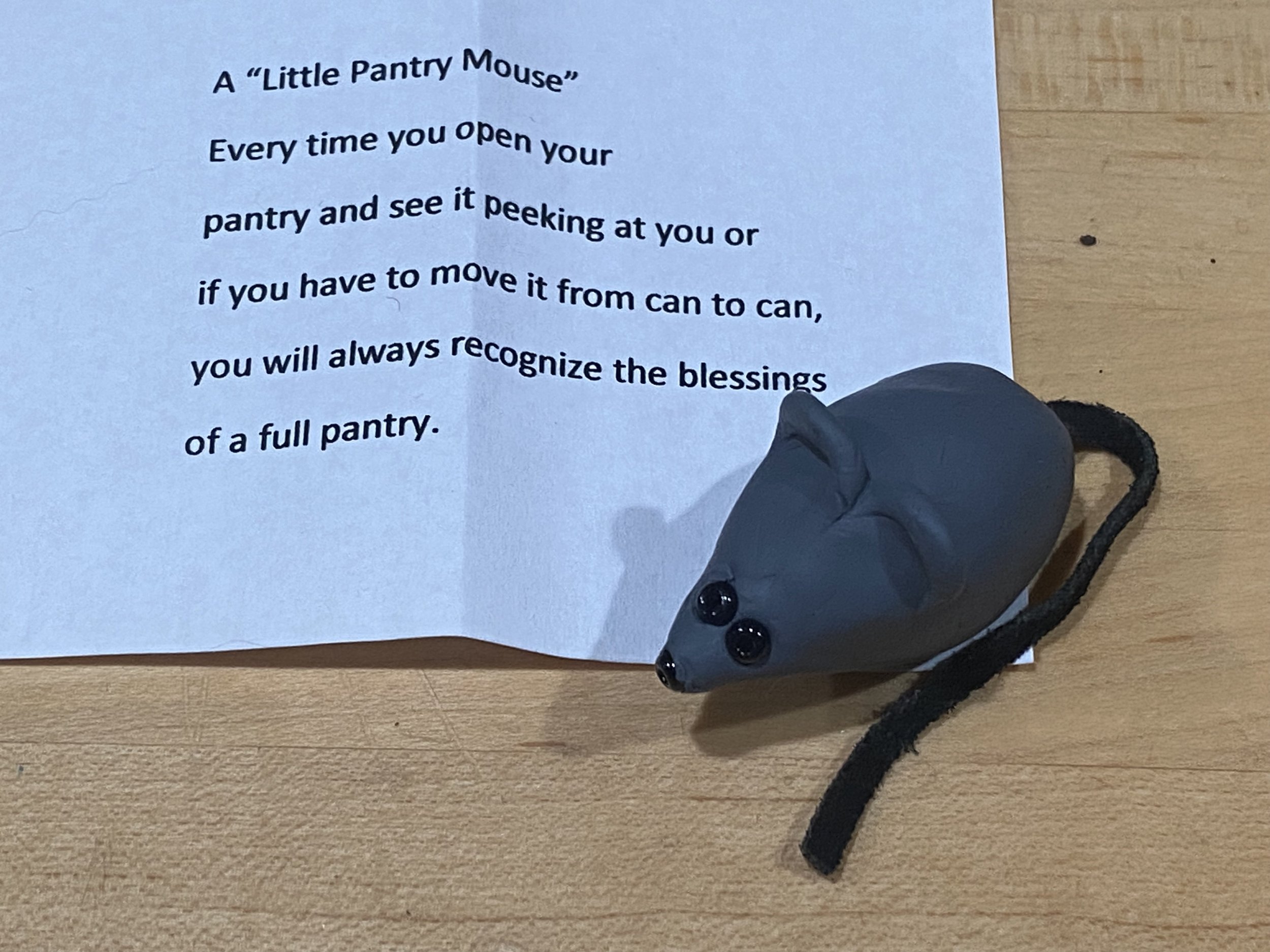King Flower Garden Custom Handmade Quilt
/This lovely king Flower Garden handmade quilt has extra large patchwork flowers. (Photo by Charlotte Ekker Wiggins)
King Flower Garden Custom Handmade Quilt
When I started Bluebird Gardens in 1998, I found two flower garden quilts for a friend of my Mom’s who wanted the quilts for graduation gifts for her daughters.
Since then, the traditional patchwork flower garden pattern has been an all-time favorite and one we keep in our inventory because this business is based on gifts from the garden. And what better gift than a custom quilt with a flower pattern.
According to Judy Anne Breneman, this is a very labor intensive quilt pattern, usually pieced and quilted by hand like this king Flower Garden Custom Handmade Quilt.
Roots in 18th Century Hexagon Quilts
Breneman said this pieced hexagon quilt has roots in England as far back as the 18th century. European immigrants brought this pattern to America. Hexagon templates for these quilts have been found that were made around 1770. This leads historians to believe that the hexagon pattern might be one of the oldest pieced quilt patterns.
The earliest known American made hexagon quilt is dated 1807 while an English hexagon quilt is dated even earlier. It's likely they were made for years before that time as quilts of this era were often not dated and few of the quilts made this early have survived.
The extra row of patchwork hexagons around the flowers adds an extra dimension. (Photo by Charlotte Ekker Wiggins)
Honeycomb or Six Sided Patchwork
In the 19th century hexagon quilts were known as Mosaic quilts, Honeycomb quilts or Six Sided Patchwork.
Godey's Ladies Book, founded in 1830, published the hexagon pattern in 1835. It is thought to be the first pieced quilt pattern published in America. All things English were emulated by cultured American women during this period.
The way the hexagons were arranged changed over the years. By the 20th century, hexagon quilts were usually made in the Grandmother's Flower Garden pattern. They became popular during the Depresssion re-purposing fabric remnants into colorful, and cheerful, bed covers.
The traditional Grandmother’s Flower quilt pattern includes a center hexagon circled by six colorful printed or solid hexagons with another row of 12 hexagons around that. The centers were sometimes yellow to represent the flower's center. Between each flower was a row of colored solid hexagons to represent the background. A green background might have been the garden while white could have been a white picket fence.
Green fabric backing highlights the hand quilting around each hexagon. (Photo by Charlotte Ekker Wiggins)
Grandmother's Flower Garden Quilts
Breneman said during the first decades of the 20th century most quilt makers aspired to make at least one Grandmother's Flower Garden quilt. It was part of their wedding trousseaus, collections of special home decor and bedding made and stored until the maker married.
These later custom quilts may have been made up of slightly larger hexagons and were more often sewn together with a running stitch but finishing one was still a major accomplishment.
Each flower has both contemporary and vintage cottons. (Photo by Charlotte Ekker Wiggins)
This custom Flower Garden quilt has an extra row of hexagons making the flowers larger and more dramatic. The size is helpful since the quilt is made for a king size bed.
Even if they aren’t quilters most gardeners know about this traditional patchwork quilt. Even I made one from clothing remnants and it’s one of my prized possessions.

